 |
| Keiji Oishi – Department Manager of Nikon’s Imaging Business Unit, UX Planning Department. Picture courtesy of Nikon. |
What a year it has been. We last spoke to Nikon executives at CES in January, before most people had even heard of COVID-19, but a lot has happened since then. Factories have been closed, planned releases delayed, and virtually every aspect of our lives disrupted. As 2020 (finally…) draws to a close and Nikon gears up for its final product releases of the year, we caught up with Keiji Oishi, Satoshi Yamazaki and Takeshi Suzuki to talk about the upcoming Z 6/7 II, and where the Z system goes from here.
Contributors:
- Keiji Oishi [K.O.]- Department manager: Imaging Business Unit, UX Planning Department.
- Satoshi Yamazaki [S.Y.]- Department manager: Optical Engineering Division/ 2nd Development Department.
- Takeshi Suzuki [T.S.]- Department manager: Optical Engineering Division /3rd Designing Department.
The following interview was conducted over email and has been edited for clarity and flow.
What challenges has your business faced since we last spoke in January?
[K.O.] Little did we know when we spoke in Las Vegas earlier this year what we would go through in the months that were to follow.
Drops in consumer demand began in China and progressed rapidly throughout the rest of the world. The initial reaction [to COVID-19] from consumers was to halt purchasing. Since that time, there has been a surprisingly healthy return. We’re not yet back to normal levels, but much better than we anticipated in the beginning of the pandemic. Any manufacturer that sees demand wildly fluctuate like that will have a challenging time adapting due to the supply chain.
Fortunately, global demand is resuming, and it’s coming back strongly, since people have discovered their desire to create. We want to respond to such new-found creative needs.
In the very near future we will be coming out with Z 6II and Z 7II, and with the introduction of the two new bodies, the Z-mount system will consist of 6 cameras and 18 lenses [including two teleconverters].
Which products / product lines were most affected by the COVID-19 pandemic?
[K.O.] Higher price point cameras were the most impacted, probably due to an almost complete cessation of work for professional photographers, and a difficult economic climate where people were spending less, as well as restrictions on travel.
Some unexpected things happened as a result of the pandemic, though. We have found that customers at home want to create, and we also saw a demand for livestream capabilities, a spotlight topic this year for the entire industry. We have recently added the free Nikon Webcam Utility livestream beta software as a result.
 |
| Despite the challenges created by this year’s pandemic, Nikon brought the Z5 to market – an entry-level full-frame mirrorless model that has become a favorite in the DPReview office.
Read our in-depth review of the Nikon Z5 |
Nikon is recovering, and at a fast pace. We were recently able to bring the Z 5 to market as well as two extremely important lenses, the 14-24mm F2.8 and the 50mm F1.2, while the 70-200mm has also come to market. Furthermore, the Z 7II and Z 6II will be joining the lineup soon. These, as well as other items, will be shipping to our customers and retailers, and we are confident that their performance will drive additional customers to Nikon.
We have also added three major firmware updates to dramatically enhance performance of our existing models, including AF improvements, adding eye detection for humans and animals, functionality enhancements, ProRes RAW, CFExpress compatibility and more. We will continue to listen to customer feedback and continue to improve our current models via firmware.
Can you explain exactly why the 70-200mm F2.8 has been so severely delayed?
[K.O.] We sincerely apologize to our customers for the delay. The delay was due to a combination of factors, including COVID-19. The 70-200 is a top-class lens, requiring top-class performance. In the midst of the pandemic, our challenge was ensuring quality in the final adjustments of the product while our teams were restricted in travel, as was the supply chain of necessary components.
Nikon always takes the time to make sure our end-products exceed customer expectations and meet the standards of those users who depend on Nikon reliability and usability.
The Z 6 and Z 7 are more than two years old – what are your customers asking for as you prepared their replacements?
[K.O.] First and foremost, we have been concentrating on the expansion of the system as a whole. We have made a lot of promises with the Z-mount, because the format has so much potential due to its superior capabilities like the largest mount diameter for more light gathering ability.
We have a variety of requests from the market. On one hand, we have received positive feedback regarding the improvement of our products via continual firmware updates. On October 14th, you’ll see that these new cameras have addressed several points with hardware updates, that cannot be resolved with firmware alone. While it’s true that the Z-mount system is built to evolve, firmware updates are only capable of so much. At some point, you need to create new hardware upgrades and the latest innovations.
The next chapter is very exciting for us, because of the breadth of the lenses now available
These bodies will exhibit Nikon quality – outstanding reliability and usability as a tool, enhanced with feedback from professionals from the first generation. The next chapter is very exciting for us, because of the breadth of the lenses now available, and we have listened to the market and customers extensively.
 |
| The single card slot of the Z 6 and Z 7 attracted a lot of criticism when they were released in 2018. It is a very safe bet that the forthcoming Z 6/7 II will feature dual card slots.
Read our predictions for the upcoming Nikon Z 6/7 II |
How many years will it be before your top-end ILC is a mirrorless model?
[K.O.] We cannot provide details about future product planning. For a camera company like Nikon, which is renowned for its commitment to imaging, a flagship camera is an extremely important statement, as well as being a model for which the newest and most innovative technology is developed.
Has the cancelation of the 2020 Olympics affected your business at all?
[K.O.] While business itself has not been significantly affected, we were deeply saddened that the Tokyo Olympics were postponed this year. However, safety needs to be the primary concern.
Earlier in 2020 we released imaging equipment that was designed to meet the demanding needs of professionals capturing the games, including the D6 and the 120-300mm lens. We hope they will be used when the games resumes.
What are you hoping for in 2021?
[K.O.] We are excited for 2021 and what it will bring. Already we have committed so much energy and passion to making the Z-mount system a powerful platform, and we are looking forward to continuing that and bringing out the additions for the NIKKOR Z lens lineup, as well as other exciting products to make the system more complete.
We came to market later than our competitors did, and from a business perspective, one of the biggest challenges we have had to overcome is that when we launched the Z-mount system, it was hard to communicate the advantages of optical performance and design with a system at launch that was not yet complete.
We now have the most important lenses, and a system that covers both full-frame (Nikon FX format) and Nikon DX formats, and with the arrival of the next chapter of Z, we have cameras that will satisfy users need for photography and video.
 |
| The Z 6 is Nikon’s most convincing ‘multimedia’ ILC yet, and with a paid update it can record ProRes Raw video footage to an external Atomos recorder. |
Now that we have released the key lenses, and momentum is building for the Z-mount system, it’s time to get excited. We plan to have more than 24 lenses by the end of 2021 to meet the needs of all types of creators.
The Z 6 has been well received among video enthusiasts and filmmakers, and its successor promises even more. We hope that more video professionals will discover Nikon due to our innovative features for creators.
Can you tell us how many people have opted for the paid firmware for the Z 6?
[K.O.] While I can’t give a specific number, the number does vary per region. I can tell you that it did exceed expectations, and we are excited to see so many people wanting to use the Z 6 as a professional tool.
There has been enough interest in the Z 6 ProRes Raw firmware to tell us that we should continue to develop cameras with a focus on the multimedia creator.
Will you commit to producing more enthusiast-friendly DX-format lenses?
[K.O.] We always evaluate the needs of the market and respond accordingly, and we recognize that there is demand for more DX-format lenses. Our lens lineup strategy is constantly evolving, and we do have more DX format lenses planned, with more possibly in the future, as well.
Forthcoming FX lenses like the 40mm and 28mm were designed with DX users in mind as well
But also, one of the benefits to Nikon cameras has always been lens interchangeability. All Z-mount lenses work perfectly on the Z 50. Forthcoming FX lenses like the 40mm and 28mm were actually designed with DX users in mind as well. This is a distinctive advantage of the Z-mount: the same lenses can be used even if the customer opts to change their camera.
How has the reception been for the Z 50?
[K.O.] So far, the reception from consumers has been very good. They appreciate the small form factor and the advanced functions that respond to casual to advanced shooting needs. They also enjoy the extremely compact kit lens, the NIKKOR Z DX 16-50mm F3.5-6.3 VR, and the resulting colors and image quality.
The Z 50 has proved to be many users’ first mirrorless camera, and we are happy they have chosen to be a part of the Nikon ecosystem. We were also happy to find that the Z 50 was chosen by many Nikon full-frame camera users as their second camera.
What is your APS-C strategy for Z-mount?
[K.O.] We will continue to watch the market and deliver products that meet consumer’s needs.
 |
| The Z50 is Nikon’s first attempt at an APS-C format mirrorless camera, and it’s aimed at first-time camera buyers and casual photographers. All Z-mount lenses are compatible with all Z-series cameras (although the DX zoom lenses for the Z50 will impose an APS-C crop when used on the Z 6/7).
Read our review of the Nikon Z50 |
What do you shoot with personally?
[K.O.] Currently, my two main cameras are the Z 6 and D850. The D850 is in my opinion a nearly perfect DSLR and is highly reliable. I mostly shoot it with a AF 85mm f1.4 D which I bought when I was a student. At the time, it seemed out of my league. I recall that when I looked at this lens at the store, I was mesmerized by the size of the front of the lens – it felt as though it was drawing me in. I truly loved the bokeh it produced (back then, with a film camera). Since then, though newer lenses with better rendering capabilities have been released, I still use the 85mm even after switching to the D850.
When we launched the Z system I was torn between the Z 6 and the Z 7, but since I already had the D850 for high resolution use, I purchased the Z 6, because it’s convenient for multiple purposes. At the same time I purchase a Z 50mm F1.8 S. It pairs perfectly with the Z 6, which is ideal also for video, and it is often that I use them as a set. Also, I still actively use the D5500, which I oversaw the planning of when I was a Product Manager in the past.
Each of us at Nikon does our best to improve our cameras and lenses so that they feel just right in your hands
[T.S] Since I enjoy travel, I enjoy the compact, portable, and high-power zoom lens, AF-S DX NIKKOR 18-200mm F3.5-5.6G ED VR II. This is also a lens that I was in charge of designing, alongside my colleague Satoshi Yamazaki. We oversaw its optical and mechanical design. Additionally, I have to say that I will be buying the new NIKKOR Z 14-24mm F2.8 S, to replace my AF-S NIKKOR 14-24mm F2.8G ED.
[S.Y.] As a person who has been involved in lens design, it’s hard for me to choose. I love all lenses, as they each have unique features. At the moment, I might choose the AI AF-S Zoom-Nikkor 17-35mm F2.8D IF-ED. For its time, it was a remarkable lens in the level of compactness and performance it achieved. It’s a lens I oversaw at the time, as well. It was an inspiration for me when developing the NIKKOR Z 14-24mm F2.8 S, in balancing high-performance and lightweight portability.
For non-Nikon lenses, while not an interchangeable lens, I personally enjoy the Rollei 35. Film cameras have their distinctive appeal, and I love the feeling of shooting film.
What is your greatest priority over the next year in terms of new products?
[K.O.] Our priority is to continue to make products that inspire creativity, and push the limits of what’s technically possible, especially from an optical standpoint. While we cannot provide details regarding future product planning, we aim to increase the joy of shooting with enhanced ease of use and reliability, all while improving on the hardware’s sophistication, without compromise. Specifically, we are looking to focus on improvements across the board by adding more powerful multimedia features, enhanced performance, and extended capabilities.
Each of us at Nikon does our best to improve our cameras and lenses so that they feel just right in your hands, thereby enhancing the joy of shooting.
A lot of our readers are hoping for a ‘Z8’ or ‘Z9’ model above the Z6/7-series. Is there anything you can tell them?
[K.O.] We are continuing to expand the Z mount system, which is still in the process of growing. While we are working hard to consider future products that will exceed the expectations of users, including professionals, I cannot comment further on the development of particular future products.
 |
 |
| Takeshi Suzuki (Department manager: Optical Engineering Division / 3rd Designing Department) |
Satoshi Yamazaki (Department manager: Optical Engineering Division / 2nd Development Department). |
What is your biggest priority over the next year in terms of lenses?
[T.S] We just released the Z 50mm F1.2 S as the beginning of our lineup of fast lenses, while the addition of the Z 14-24mm F2.8 S completes the ‘Holy Trinity’ of F2.8 lenses (alongside the Z 24-70mm F2.8 S and Z 70-200mm F2.8 VR S). Our next priority is to provide lenses that appeal to wide audiences, such as lenses with a focus on thinness and entry point lenses like the standard zoom lens Z 24-50mm F4-6.3, as well as some unique lenses.
Our goal is to further expand the market by appealing to a wide variety of creators, with lenses such as the planned 40mm. This is, of course, without compromising our commitment to excellence. With the Z-mount system, we have the advantage of the largest mount, and the greatest potential. The large-diameter Z-mount really is our greatest advantage, and we want people to experience first-hand the ultimate imaging experience it allows.
What advantages does the new Z 50mm F1.2 have, optically?
[T.S] This kind of lens is what the Z-mount was made for: It’s super-fast and super-sharp. We are very proud of this lens, as it is the perfect balance of gorgeous, smooth bokeh and amazing sharpness.
It contains a symmetrical lens formula that minimizes the bending of light that occurs as it goes through. This creates the purest, cleanest image. The biggest impact of the largest-diameter mount upon this lens is that we were able to position the focus unit towards the rear, guaranteeing AF performance.
It’s the first lens of its kind to include twin STM motors driving the AF. The adoption of two STM motors has enabled superior AF speed.
 |
|
What Nikon calls a ‘symmetrical’ construction, in the new Z 50mm F1.2 S. The large rear element helps keep light rays perpendicular to the sensor, which should greatly improve corner resolution and rendition of point light sources at the edges of the frame (as well as vignetting).
Learn more about the Nikon Z 50mm F1.2 S
|
Can you explain the difference in optical design between a fast 50mm for F-mount, and a comparable lens for mirrorless Z-mount?
[S.Y.] This lens design would be impossible with the F-mount. The wider lens mount of Z allows for innovative optical formulas that our engineers can use to push the limits. With the F-mount, conventionally, we would have needed to add lens VR. With the Z-mount system, Z-series camera bodies include in-camera VR, which in combination with the largest-diameter Z-mount and short flange back distance, has freed up space in the lens.
Some users will want the ultimate, no-compromise image quality, while others will need portability. The Z-mount allows for both kinds of lenses
This enabled us to incorporate two focus units, thus enabling the multi-focusing system, resulting in superior optical performance at short distances, for sharp and clear images as well as AF speed.
How do you decide the cost / weight tradeoff when designing high-performance lenses for Z-mount?
[S.Y.] That is the challenge in lens design. To truly understand the customer needs while also delivering on the potential of superior image quality. Some users will want the ultimate, no-compromise image quality, while others will need portability. The advantage that we have is that the Z-mount allows for both kinds of lenses: small and portable when you need that, and superlative Image quality for those that demand it.
When it comes to our decision-making, the biggest factor in determining this balance is feedback from our users.
As a lens designer, does designing lenses for Z-mount give you more freedom? (and if so, can you explain how?)
[T.S.] Yes, designing lenses for the Z-mount does give us more freedom. This is an exciting time for optics. Because the lens mount is wider, we can be more creative with designs and make faster lenses. With in-camera VR, the limitations surrounding VR for wide-angle lenses have been minimized, enabling higher-performance AF. Additionally, a crucial mission of ours with the Z-mount system is consideration for video. By driving a large focus unit with STM, we are able to drive the focus unit more quietly, accurately, and fast, in pursuit of lenses that are also ideal for video. Additionally, minimal focus breathing has been achieved.
All of these are things that have been enabled by the increased freedom provided by the Z-mount. The Z-mount was created from scratch to deliver the ultimate image quality on a full frame sensor. When we determined what the mount should be, we were careful to design it in a way that would give us the most freedom from an optical design standpoint, so today we feel much more able to create new types of designs and lenses because of the flexibility of the Z platform.
 |
| Any excuse to re-use this image, to be honest. Here’s a Z7 (on the left, in case you couldn’t tell) alongside the very first F-mount camera, the Nikon F, on the right. The Z-mount is the largest of the current mirrorless mounts (albeit only just), whereas the F-mount is very narrow, and was even back in its day. This image illustrates the mount diameter difference, and helps visualize the additional flexibility allowed to a lens designer when developing lenses for the Z-mount. |
Optically, what are the main differences between the AF-S 14-24mm F2.8 for F-mount and the new Z 14-24mm F2.8 S?
[S.Y.] When designing the Z 14-24mm F2.8 S, our priority was to achieve a lens that balances high-performance and lightweight portability. This is the biggest point of difference compared to the iconic AF-S 14-24mm F2.8G ED. When evaluating how to improve at this proven formula, we considered customer feedback and recognized that we could make it even sharper, and at the same time lighter and with faster AF because of the benefit of the Z-mount.
Additionally, in comparison to the AF-S 14-24mm F2.8G ED, point-image reproduction of point-light sources, as well as backlight resistance which effectively suppresses ghost and flare even under harsh lighting conditions, have both improved drastically. This new design also had an added benefit, which was the ability to use conventional filters, something that our customers have requested for many years.
What is the benefit of the new optical construction with a larger rear element?
[T.S.] There is no need to forcibly bend light to get it onto the sensor. Other companies, on the other hand, with smaller mounts, do need to forcibly bend light, which can reduce image quality. Additionally, with the short flange back distance, we are able to reduce lens size, while further contributing to performance.
Does the new Z 14-24mm F2.8 use any in-camera digital correction for distortion?
[S.Y.] There are proprietary algorithms that are implemented for almost every lens. As technology evolves, we are able to harness both optical, technological and computational innovations with the end result being the best image quality. Compared to NIKKOR F lenses, we have been able to achieve higher resolution.
To further benefit image quality, we have advanced coating technologies that minimize ghosting, such as the ARNEO Coat and Nano-Crystal Coat. The contrast is incredible, achieving better color reproduction beyond what is possible with MTF. The Z-mount system ensures that ghosting both on the mechanical side and lens side are minimized.
Editor’s note: Barnaby Britton
Reading back over my interview with Mr Oishi at CES earlier this year (which feels like several lifetimes ago at this point) I was struck by the total absence of any mention of COVID-19. We spoke in early January, when news of what became the pandemic was just starting to trickle out. We might not have been talking about it, but unbeknownst to either of us, COVID-19 had already gone global – in fact, it may even have been circulating among attendees at the tradeshow itself.
With so much of Nikon’s manufacturing now based in China (the new Z 70-200mm F2.8 S is made there, and the country’s factories are a major source of components across the photo industry) the company got hit pretty hard by the Jan/Feb 2020 shutdown and subsequent supply chain disruption. The Z 70-200mm F2.8 S was meant to be available in February, but even now, in early October, it’s hard to find stock. The reason for such a lengthy delay, according to Mr Oishi, was primarily the difficulty of ensuring quality control during a period when travel (for engineers moving between China and Japan, presumably) was impossible.
Nothing has gone quite to plan in 2020, but Mr Oishi is proud that his company has been able to launch two new Z-mount mirrorless cameras this year, with two more on the way, and a number of Z-mount lenses, including the new flagship Z 50mm F1.2 S and Z 14-24mm F2.8 S. The message from Japan is clear – in Mr Oishi’s words: ‘Nikon is recovering, and at a fast pace’.
When we spoke in January, I asked Mr Oishi what his customers had requested in models to replace the then 18 month-old Z 6 and Z 7. This is what he told me:
“The number of card slots was one of the [most common] pieces of feedback. Also, we have received requests for a vertical control grip.”
At the time of writing (Oct 6th), all I know about the Z 6 II and Z 7 II is their names, and when they’ll be released. But Mr Oishi’s comments earlier this year (and a raft of more or less credible rumors in the months since) point to sensible, fairly incremental upgrades, aimed at maintaining Nikon’s competitive edge in the prosumer mirrorless market before some kind of true ‘flagship’ professional mirrorless camera comes along.
Whatever the Z 6 II and Z 7 II bring to the table, Nikon regards them as essential tools in the ongoing challenge of communicating the Z-mount’s benefits
It’s safe to assume that both cameras will offer dual card slots (probably CFExpress/XQD and SD) and they’ll be sold alongside a real vertical grip. I’ve been using a Z 7 as my main personal camera for two years, and while I’m not sure that I would upgrade just for the sake of these two improvements, I’d definitely be interested in a refined AF system (hopefully getting a bit closer to the experience of using the D850) and a refreshed UI: Specifically, a less obtrusive electronic level, and the option to toggle features like silent shooting via Fn buttons. Improved VR and faster continuous shooting would be nice too.
Whatever the Z 6 II and Z 7 II will ultimately bring to the table, there’s no doubt that Nikon regards them as essential tools in the ongoing challenge (as the company sees it) of communicating the Z-mount’s benefits. Mr Oishi is hoping that with new, more competitive cameras, and a much more complete lens lineup now becoming available, that the Z system can ‘build momentum’ and win over first-time buyers and experienced photographers alike. Back in January, Mr Oishi told us that Nikon was in ‘a transitional stage’ but now, he insists, ‘it’s time to get excited’.
The wide mount of the Z system certainly seems to be a boon for lens designers, at least according to Mr Yamazaki and Mr Suzuki. More space for larger rear elements, ‘symmetrical’ lens designs and no need to pack optical VR systems into lenses like the new Z 50mm F1.2 S. Compared to designing optics for the comparatively tight F-mount, it must be quite liberating.
We’ll bring you more news about the Z 6 II and Z 7 II when we have it, and sample images from Nikon’s new lenses as soon as we can.
Read more in-depth interviews
Articles: Digital Photography Review (dpreview.com)


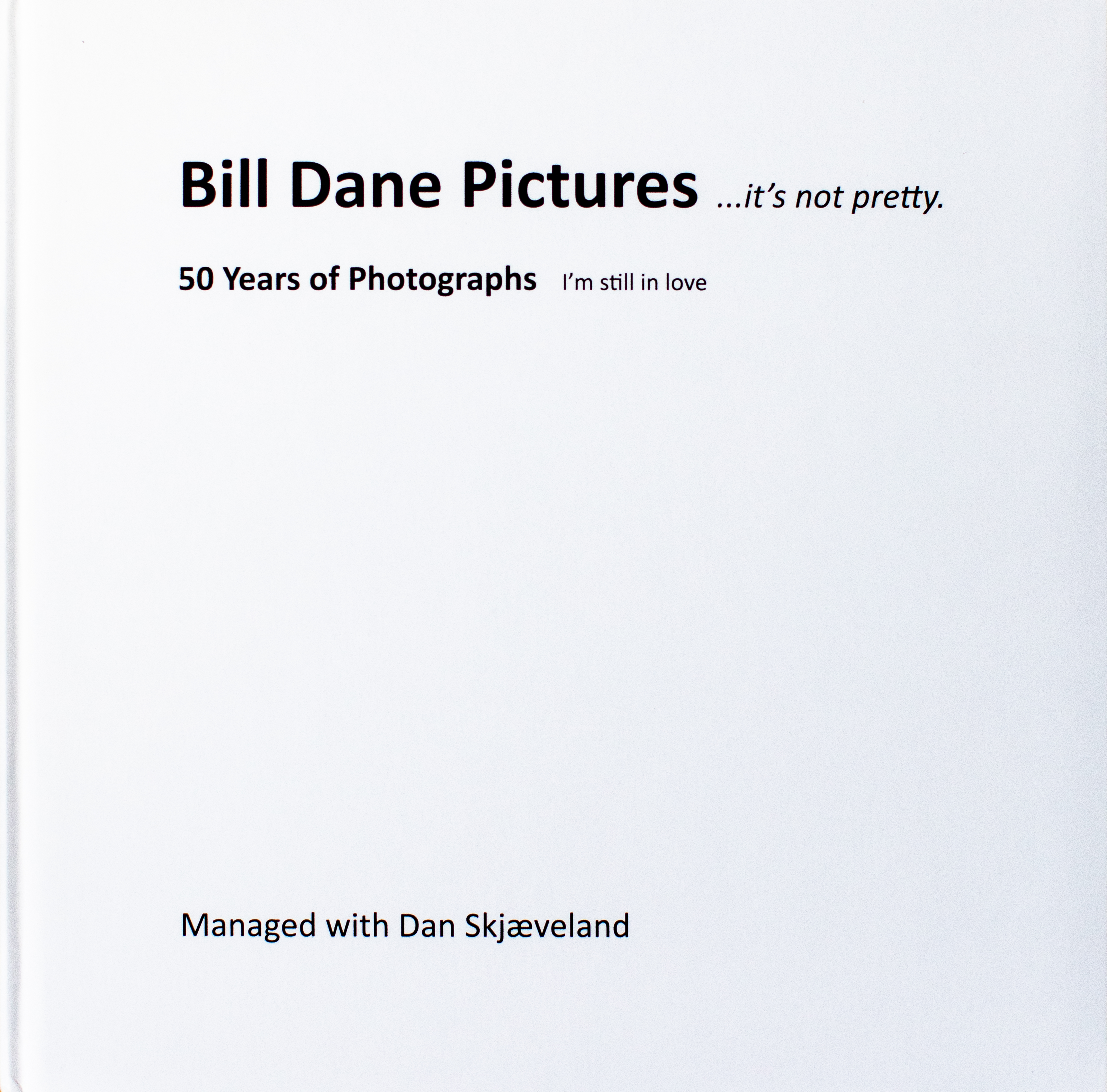

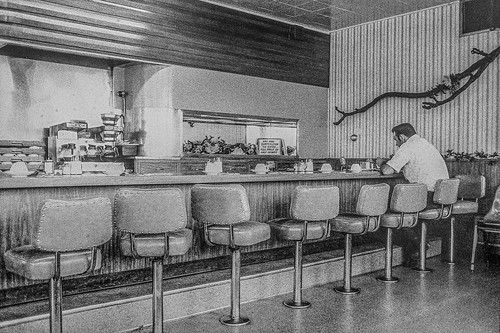
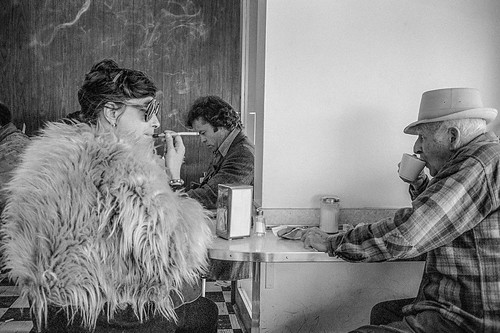
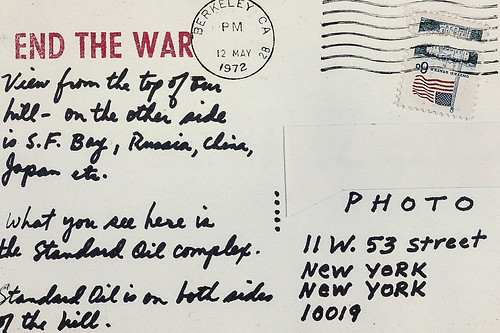
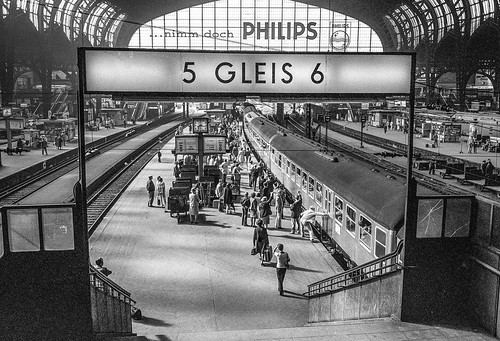






















You must be logged in to post a comment.